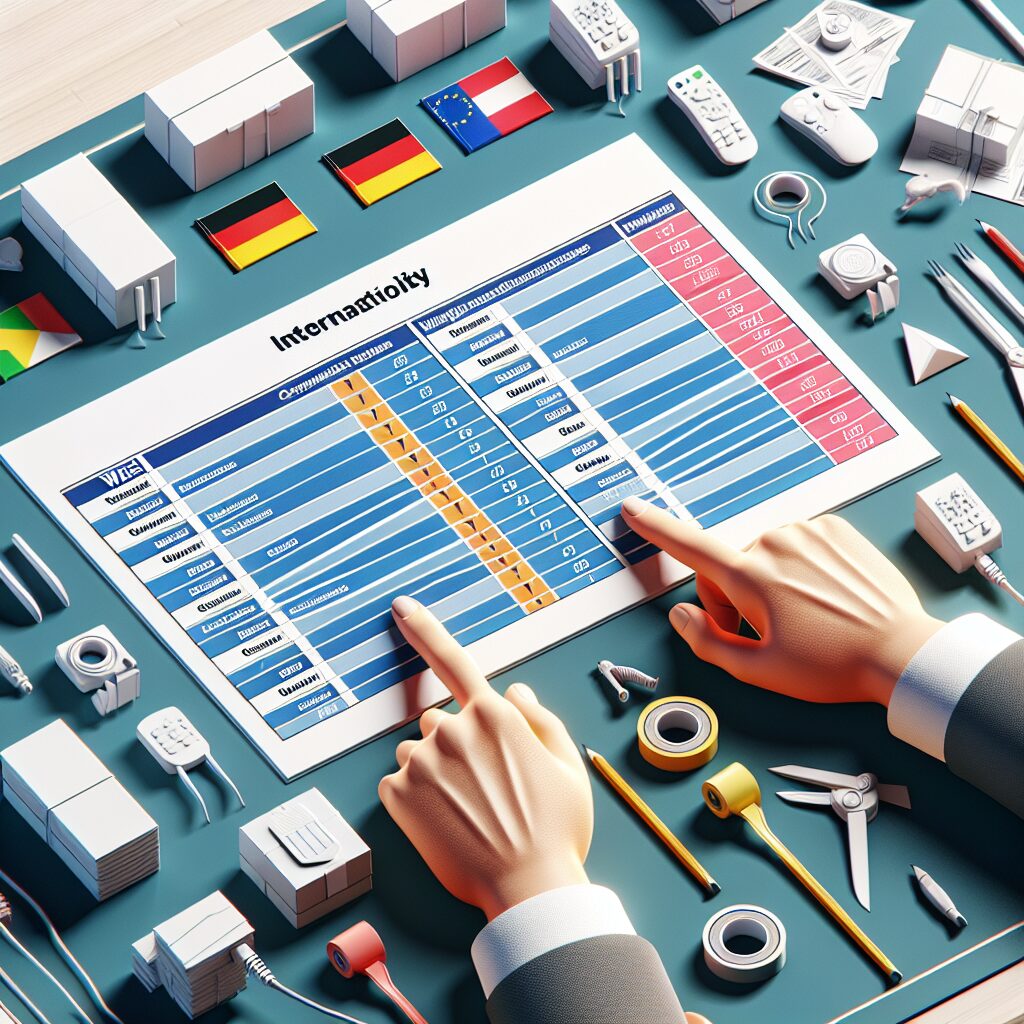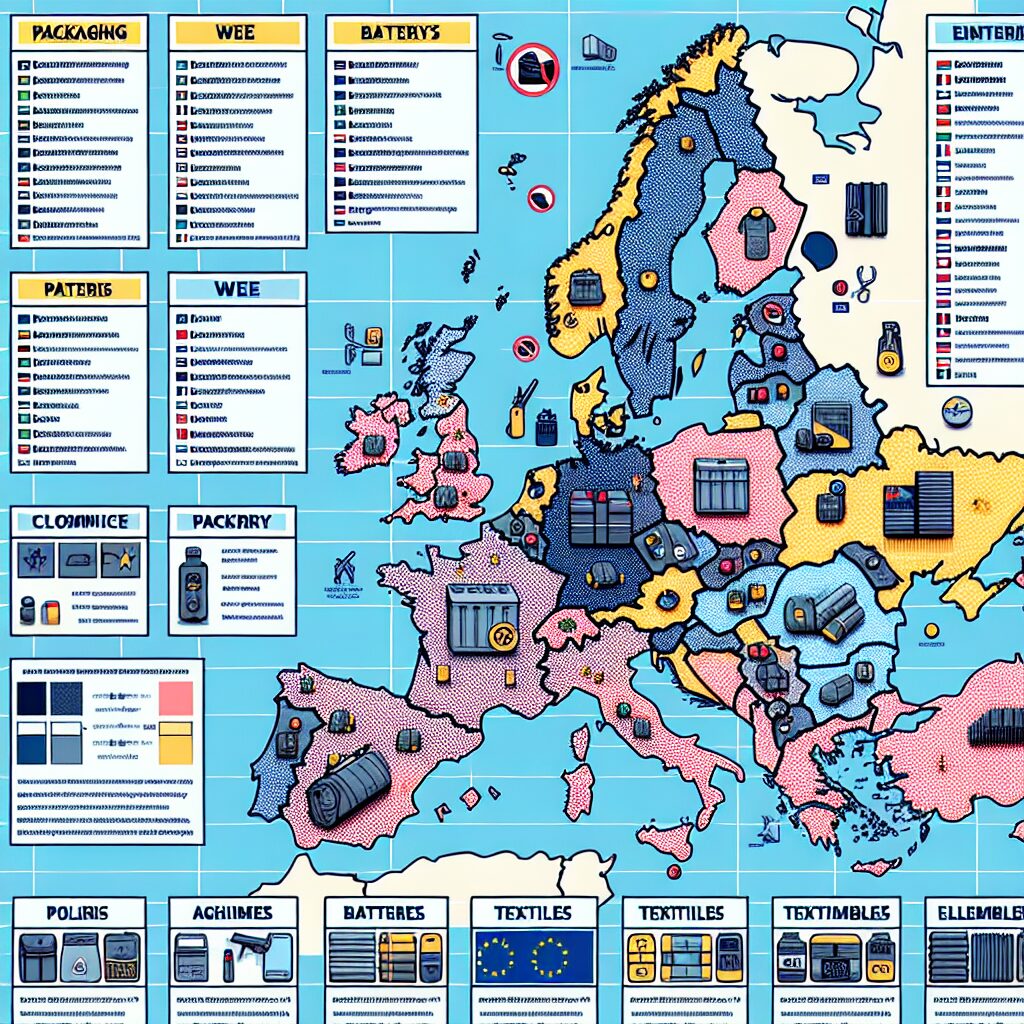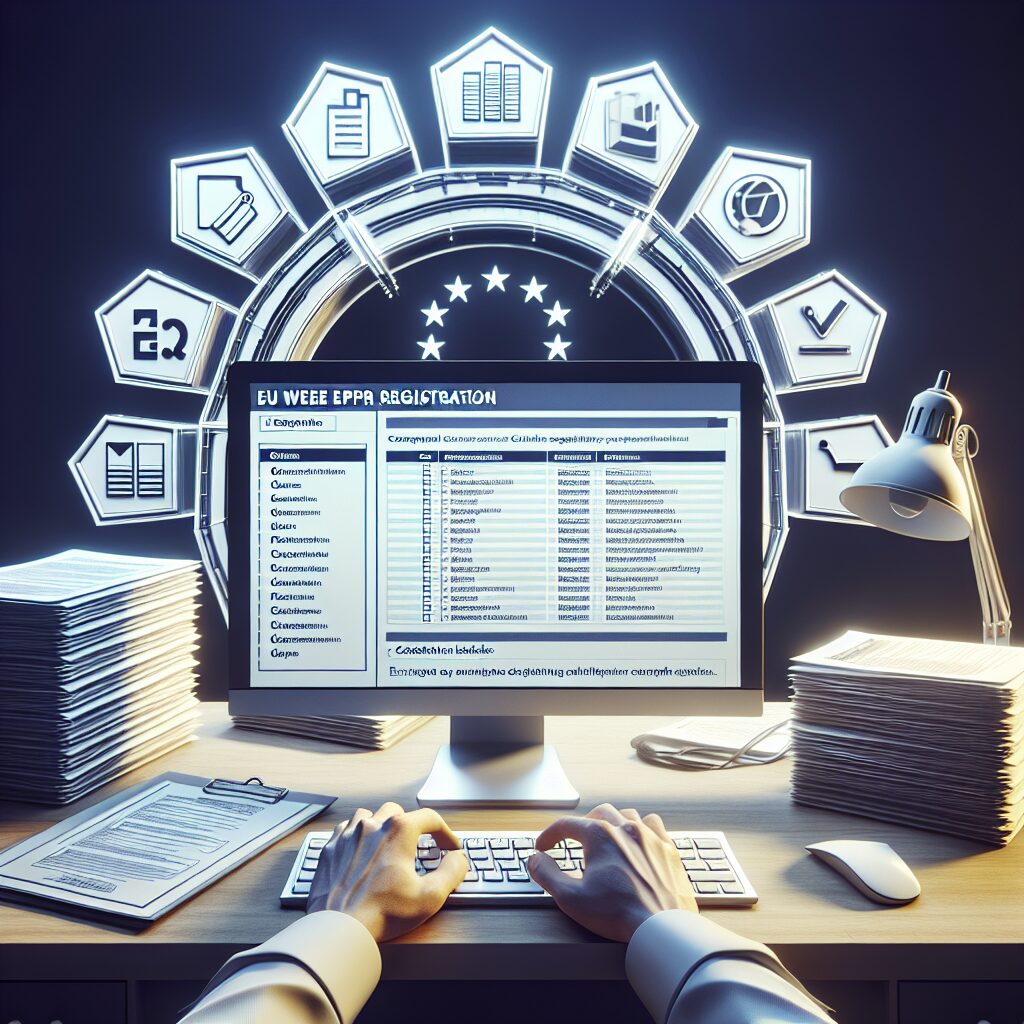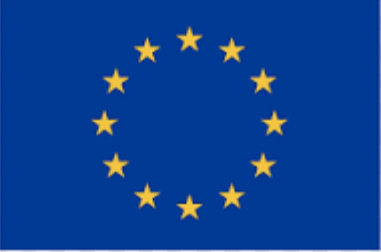About eldris
Epr.eldris.ai leads the EPR sector, in fast, automated, AI Agent EU Complaince. LUCID Packaging, WEEE, and Battery Compliance for Brands, E-Commerce and Service based businesses expanding into the EU.
In This Article
- Ensure registration under all applicable EU EPR laws to avoid penalties.
- Use a one-stop EPR compliance service for efficiency and accuracy.
- Automation significantly reduces the risk of human error.
- Marketplace sellers face increasing pressure to prove EPR compliance.
- Common mistakes include incomplete reporting and overlooked product categories.
- Choosing the right compliance partner can futureproof your EU growth.
Why EU EPR Compliance Matters for Marketplace Sellers
Understanding legal obligations and penalties
Extended Producer Responsibility (EPR) refers to environmental legislation introduced across EU member states that holds producers accountable for the entire lifecycle of the products they put into the market, particularly regarding packaging, electronics, and batteries. Navigating these laws is no longer a nice-to-have—it’s a non-negotiable legal requirement. As online sellers expand into European markets, it’s critical to partner with a specialised EPR compliance service to ensure marketplace harmony and operational peace of mind. Non-compliance can lead to steep penalties, sales bans, and brand damage, especially on digital platforms like Amazon and eBay.
EPR enforcement varies by country but typically includes mandatory registration with local authorities, accurate reporting on quantities of materials placed on the market, and the payment of recycling or disposal fees. Non-compliance notices can arrive unexpectedly, often disrupting not only business operations but also supply chains. Furthermore, failure to register or declare correctly may lead to back payments, surcharges, and even removal from key online marketplaces. This legal landscape demands precision, insight, and trustworthy automation—something marketplace sellers can’t afford to overlook.

What Is One-Stop EPR Compliance?
A single platform to manage all obligations
A one-stop EPR compliance service removes the complexity of navigating each individual member state’s requirements separately. Rather than managing multiple national compliance schemes, businesses can use a unified software-as-a-service (SaaS) platform to register with authorities, submit traceable reports, remit payments, and maintain up-to-date compliance statuses—all in one place. This not only saves valuable administrative time but also ensures that no critical deadline or rule is missed.
The centralisation of data also allows users to track their performance across multiple regions, offering insights into resource usage, material types, and cost breakdowns by market. This level of visibility is simply unattainable through manual processes or fragmented consultation models. Moreover, these platforms are typically updated in real time with new legal changes, keeping sellers one step ahead. A properly implemented EPR compliance service acts not only as a data processor but also a real-time regulatory consultant embedded into your supply chain operations.
“Our EPR service gave us the confidence to expand into five new EU countries within one quarter—compliance no longer hinders our growth ambitions.”
Challenges in Multinational EPR Regulations
Fragmentation across the EU
One of the primary difficulties businesses face with EPR lies in the regulation fragmentation across the EU. While the European Commission has issued directives, their implementation is left to individual member states. This results in substantial variation: in materials categorisation, reporting formats, registration authorities, fee structures, labelling requirements, and timelines. For example, what constitutes “packaging waste” in France may differ significantly from Czech interpretations. This incompatibility burdens exporters, particularly SMEs, who lack the in-house legal expertise to keep up.
Consequently, even the most conscientious sellers find themselves missing key obligations in one region while being over-compliant in others. Manual tracking or spreadsheet-based processes become impractical after a certain growth threshold. A single missed product category or quantity could result in a compliance audit, leading to sales suspension or fine back-charges. Unfortunately, traditional consultancy-led approaches to EPR compliance often obscure, rather than clarify, these country-level nuances. This is where a centralised, multilingual EPR compliance service becomes vital, offering controlled scalability, accurate interpretations, and legally valid submissions across the EU territory.
How Automation Elevates Compliance Accuracy
Streamlined registrations, reports, and data
Automation introduces considerable efficiency gains in what has historically been a document-heavy, manually intensive process. From product identification based on EPR scope to calculations of applicable fees per unit, automated systems accelerate every compliance function. An intelligent EPR compliance service can generate dynamic reports in the required national formats, validate data for logical anomalies, and cross-reference with sales volumes imported from marketplaces or ERP systems.
This level of automation also drastically reduces risks associated with human error—miskeyed quantities, misinterpreted product codes, or forgotten declarations. It ensures consistency throughout departments, whether marketing is launching a new SKU or logistics is altering shipping methods. Integrated audit logs and email alerts make certain that no action goes unexamined. Furthermore, via API connectivity with major platforms like Amazon, eBay, and Shopify, modern services secure first-party data validity, syncing declarations with live operational outputs. This harmonisation is especially valuable during regulatory inspections as it demonstrates good faith, transparency, and process control—attributes regulators consider favourably.
Benefits of a Unified EPR SaaS Solution
Reduce admin time and human error
Using an integrated digital platform to manage EPR compliance brings substantial operational efficiencies. Instead of allocating internal staff to read and interpret multilingual directives, a SaaS-based EPR compliance service delivers pre-configured workflows, deadlines, and declarations for each jurisdiction. Processing times for manufacturer registrations that might have taken several business days can now be reduced to hours.
Beyond time saved, a centralised system cuts down coordination errors. It maps product data automatically against country-level waste streams and even anticipates likely changes in compliance requirements based on product evolution. This predictive ability enables proactive risk management, alerting teams before there’s an actual breach. Moreover, audit-ready logs vastly enhance transparency and make tax or legal inquiries exponentially easier to resolve. Automated reminders, digital signature integrations and FTP uploads streamline what was once a bureaucratic ordeal into a seamless digital experience.
Marketplace Requirements and Seller Risk
Why Amazon and others demand compliance
Leading e-commerce marketplaces now mandate proof of EPR conformity from sellers trading in EU regions. Platforms like Amazon, eBay, and Zalando have all implemented strict data requests from their vendors, requiring EPR registration numbers or packaging take-back scheme affiliations at the listing stage. Sellers failing to provide such data risk having their listings suppressed or worse, permanently removed.
As marketplaces increasingly act as legal gatekeepers, unprepared vendors are caught off-guard. Many mistakenly believe that because they’re not the brand owner, EPR doesn’t apply—this is inaccurate. In most jurisdictions, the first entity to commercially introduce a product into the market is liable, which includes resellers, importers, and even cross-dockers. By subscribing to a professional EPR compliance service, businesses ensure all documentation is in place for marketplace onboarding, keeping revenue streams uninterrupted and reputations intact. For more insights, explore Learn more about EU EPR compliance and marketplace seller obligations.
Common Mistakes Sellers Make with EU EPR
Unregistered products and failed reporting
Despite good intentions, many businesses fall into predictable compliance traps. The most common misstep is operating under the false assumption that EPR requirements are harmonised across the EU. This leads to sellers registering in one country, such as Germany, and believing they’re covered across borders. Another recurring error is underestimating what needs reporting: items like packing fillers, shipping cartons, and even promotional materials all count toward obligated packaging volumes.
Failure to report products containing batteries or electronic modules—whether removable or embedded—is another trap. Sellers of smart home devices, toys, or beauty gadgets frequently miss these declarations, exposing themselves to retrospective fines. Infrequent reporting or entering estimates rather than real dataset values can also raise red flags. The antidote is a comprehensive EPR compliance service that audits for gaps, flags risky declarations, and delivers integrated product tagging across platforms. For a deeper breakdown of prevalent mistakes, visit Guidance on international EPR responsibilities.
Choosing the Right EPR Compliance Partner
Key features to look for
Selecting the correct EPR compliance service requires a criteria-led evaluation. Start by verifying legal competence—your provider should offer legally-backed registrations in all relevant EU states with direct connections to environmental authorities. Look for multilingual capability, particularly in customer service, to ensure smooth interactions when regulatory questions arise. SaaS providers should also have intuitive dashboards, detailed analytics, and compliance calendars mapped per country.
API integration with ERP or sales platforms, scalability across volumes, and audit-ready documentation are non-negotiable. Additionally, real-time rule updates and guidance notes embedded in the platform reduce your legal overheads significantly. Seek partners offering onboarding workshops, training for your operations staff, and periodic compliance health-checks. Integrated customer support, fast registration turnaround, and data exportation in EU-compliant structures add the final layer of operational resilience. Discover more on this at Read a related article.
Benefits for Cross-Border Sellers
Expand with confidence in every EU country
For sellers operating across multiple EU countries—or those with cross-border growth aspirations—an integrated EPR compliance service offers critical value. Sellers can unlock pan-EU growth without needing to learn and implement the intricacies of each national scheme individually. This creates speed-to-market advantages and empowers lean teams to focus on customer acquisition rather than legal decoding.
By consolidating all compliance reports and payments within one intuitive dashboard, sellers can reduce overhead and improve cost forecasting. Platform-generated reports allow for instant identification of high-fee territories or packaging inefficiencies. Unlike traditional consulting that adapts slowly to change, digital platforms scale alongside your operations, onboarding new countries with just a few data fields and clicks. This agility is essential for survival in today’s multichannel, multi-market e-commerce era. For helpful guides on EU-wide trade changes, see Understand EU Responsible Person rules.
Real-World Use Case: EPR Success Story
From fragmentation to automation
Consider a UK-based homeware brand selling online to France, Italy, and Germany. Initially, their compliance approach involved hiring local agents to manage registrations, submitting Excel reports quarterly, and attempting to meet three different set of deadlines manually. Errors crept in, including missed French declarations and late payments in Germany—resulting in warnings from Amazon.
After switching to a centralised EPR compliance service, they were able to consolidate all markets into one unified interface. Automated notifications ensured timely submissions, while API synchronisation eliminated manual report generation. Within six months, the brand avoided late penalties, improved packaging efficiency, and was able to expand into Austria and the Netherlands within the same fiscal year. This transition illustrates how digitisation of compliance not only resolves legal liability but unlocks strategic opportunity.
Getting Started with Eldris EPR Platform
Onboarding, demo, and support
Signing up with Eldris is straightforward. The onboarding team offers a free compliance audit of your current product catalogue and marketplace scope. Once mapped, the Eldris platform creates your tailored EPR dashboard for country-specific declarations. A live demo helps users understand functional features, from automated alerts to report exports. Dedicated success agents are available throughout your compliance journey, ensuring that you’re never navigating EU environmental duties alone.
The platform also includes training modules, knowledge bases, and live tracking of regulatory updates. Whether you’re launching into one market or ten, Eldris ensures your brand remains compliant and agile at all times. Begin your journey towards seamless EU compliance today.
Great guide on one-stop-epr-compliance-service-eu-obligations – Community Feedback
What does one-stop EPR compliance mean?
One-stop EPR compliance refers to a single, integrated service that covers all Extended Producer Responsibility regulation needs across the EU, helping businesses manage packaging, WEEE, batteries, and reporting in one place.
Why do marketplaces require EPR compliance?
Marketplaces like Amazon require EPR compliance to meet EU legal requirements for waste management and recycling, ensuring sellers take responsibility for the end-of-life impact of their products.
How can EPR automation reduce administrative burden?
Automation streamlines data collection, registration, reporting, and fee calculations, minimising manual work and compliance risks for brands selling across multiple EU countries.










